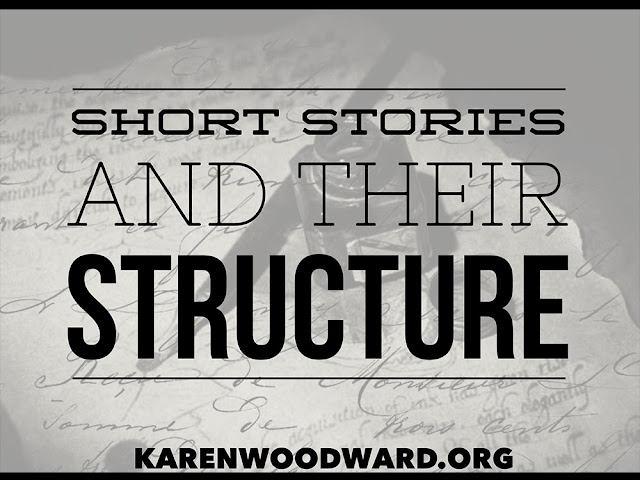Have you ever wanted to write a Choose Your Own Adventure (CYOA) story? I have! But I had no idea how to begin. I'd never written something with the unique branching structure these stories have. Though, one would think, it can't be that hard. Right? (Yep. I have a feeling that falls into the category of famous last words.)
(How to Write a Choose Your Own Adventure Novel, Part 1)
I had been planning to dive into the technical side of the branching structure today—how many nodes (/narrative blocks) should I include, what shape should the decision tree be, what kind of choices should be presented? How many choices should there be? And so on.—and I will! But there's just too much material to cover in one post, so I'll pick this discussion up again next time.
Today, let's concentrate on the branching nature of a CYOA story and how to capture, and hold, a reader's interest. By the way, a terrific article that influenced my thinking about CYOA stories—and which has informed many of the points I make below—is "Writing Tips: how to write a choose your own adventure story," by Len Morse. [1]
CYOA Stories: How to Entertain Readers
Here are three tips on how to keep your audience's interest:
1. Don't make it too simple, have your plotlines intersect.
In a choose your own adventure story the branching nature is an essential element of the story. It's part of the fun! A CYOA story isn't meant to be read once then put aside. Readers want to finish and then go back and try alternate routes.
This means that if your story doesn't provide an interesting enough structure, a tempting structure to explore, that they'll be disappointed. For example, you want to use a structure where various timelines occasionally intersect. For example [1]:
I'm not going to say too much more about this right now since I'll be revisiting the unique structure of a CYOA story in my next post.
2. Think about the stakes.
Briefly, the stakes of a story are the possible consequences of a course of action. What will happen if the protagonist achieves her goal? What will happen if she doesn't? Stakes generate conflict and, therefore, suspense.
I've written a blog post about stakes and their importance so, rather than re-writing that post here, if you'd like to read more about this and see an example of how stakes generate suspense, head over to "Stakes: How To Make Goals Matter."
In CYOA stories (and this applies to any genre story) the goal of the writer is to entertain the reader. If we can give our readers an epiphany concerning life the universe and everything while we're at it, then great! But, primarily, we want to entertain them.
Mix up the stakes. This part is common sense, but I'm going to say it anyway. Stakes should vary. Readers don't want every choice to be life or death and they don't want every choice to be unimportant (often humourous choices are trivial, or seem trivial). It's good to have a mix. Even if you're writing a serious end-of-the-world supernatural horror CYOA, throwing in a bit of humor is a good thing. (Think of Breaking Bad.)
Have stakes follow structure. One thing to keep in mind when creating these branching choices is the protagonist's overriding goal. It is often more effective to have a greater percentage of trivial stakes in the beginning and have most of the stakes toward the end be more weighty.
If you look at the structure of a story this makes sense. The beginning of a story is slower. You have to introduce the characters and the setting. This takes time and, although you can definitely include action, it's not as action packed, not as intense. And, of course, it couldn't be because reader's aren't yet invested in the characters. If you put the protagonist's life in danger too early your readers might shrug and think, "Who cares?"
In the final act (this is true whether one uses a three or four act structure) all the characters have been introduced and (quite likely) we're somewhat familiar with the setting. Now there is nothing to do but pit the antagonist against our protagonist. As a result this part of the story generally moves quite quickly.
3. The number of choices.
If any of you have played a D&D game, this will be familiar to you. You've just begun playing and you walk up to another character. After some text that orients you in the situation—who they are and who they are to you (to you personally, as well as to folks like you). In D&D certain classes and races react in certain ways to each other. One class looks down on another, etc. So, anyway, after the setup your character meets someone. You have a choice: be the rebel badass by giving her zingy (or belligerent) one-liners. You could be conciliatory or you could try and fight her.
But at base, a choice involves at least two choices. That said, I've noticed that many choices I've come across in games involve three choices:
First choice: An option.
Second choice: The opposite of the first choice.
Third choice: Something completely different.
For instance: 1) Fight. 2) Flee. 3) Negotiate.
4. Drop hints about what lies on the other side.
Let's say the protagonist is standing in front of portals. Maybe two portals, maybe three. Perhaps—writers gone wild!—even four. But let's say there's only two. Sometimes you want to give your readers a clue about what lies on the other side of the portal.
And then of course you can set up your own kind of language, your own meaning. For instance, if two portals appear before your character you could have a red gem before one and a blue gem before another (Yes, I'm thinking about the Matrix!). That could give your readers a hint about what lies beyond.
Part of the beauty of this is that the writer can lie to (er, I mean misdirect) readers.
For instance, the person who placed the gems wants to fool you. They've reversed them so, now, the blue gem would lead to enlightenment and the red pill would be reality as normal.
Obviously that's just an example, and perhaps not the best one! Perhaps you can think of a better one. If you do, tell us! Leave a comment.
Next installment: How to Write a CYOA Novel, Part Four.
Want to have all this information in one place? Get How to Write a CYOA Story! Right now it's only $0.99.
Notes:
1. "Writing Tips: how to write a choose your own adventure story," by Len Morse.
2. This seems to be from what is an analysis essay assignment. Here's the link to the assignment, and here are links to the maps (first, second).
3. This is from the article: ETEC540: Text Technologies.












